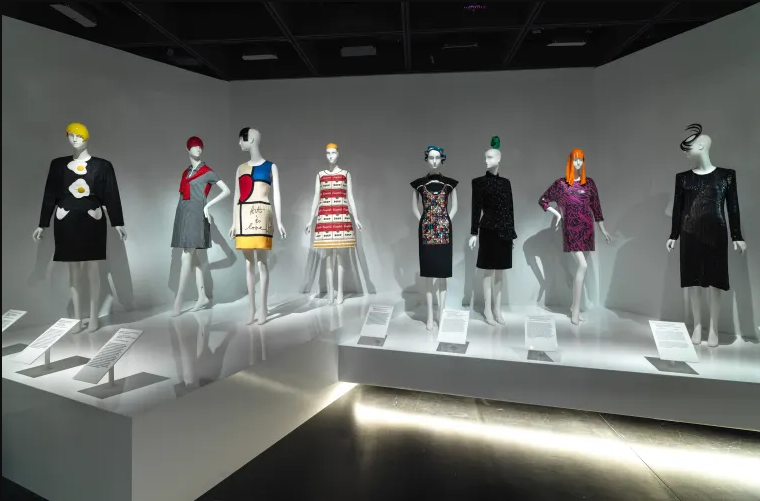The Met Costume Institute Exhibition And History – The Met Costume Institute Exhibition, or in English known as “The Met Costume Institute Exhibition,” is One of the most renowned occasions in the fashion and art worlds is The Met Costume Institute Exhibition, or simply “The Met Costume Institute Exhibition.” It is a piece of New York City’s The Metropolitan Museum of Art (The Met). Every year, the exhibition includes clothes, accessories, and costumes from numerous historical periods, including the classical era and modern fashion.
These shows frequently feature a distinct and captivating topic that directs the collection choice and exhibition layout. Numerous of these exhibitions have gained traction in the popular culture and fashion industries. These exhibitions typically showcase a specific fashion trend, well-known fashion designer, or historical era through their themes and collections. slot

In addition to the main exhibit, the opening ceremony for the Met Costume Institute Exhibition also known as the Met Gala or Met Ball, is held annually in early May. The Met Gala is a fundraising event that brings together celebrities, top fashion designers and prominent figures in the worlds of entertainment and fashion. The event was in the media spotlight because of the stunning dresses and costumes worn by the guests.
Some examples of previous exhibition themes include “Heavenly Bodies: Fashion and the Catholic Imagination” in 2018, which explored the relationship between fashion and Catholicism, and “Camp: Notes on Fashion” in 2019, which celebrated the “camp” aesthetic in fashion.
These exhibitions demonstrate the complex relationship between art, history and fashion, and often manage to combine these elements in unique and stunning ways. If you’re interested, be sure to visit The Met’s official website for the latest information on the Met’s Costume Institute exhibits and other related events.
History of the Met Costume Institute Exhibition (The Met Costume Institute Exhibition) is a long story of fashion exhibitions combining art, history, and style. Here are some key points in the history of this exhibition.
Beginning of the Met Costume Institute
In 1937, Irene Lewisohn and Alice Lewisohn Crowley founded the Costume Institute at The Metropolitan Museum of Art. Its aim is to honor and preserve the history of clothing and fashion, and to present collections spanning various periods.
Classics Exhibitions
Since its inception, the Costume Institute has presented exhibitions highlighting styles and fashion trends from various eras, from classics to haute couture. These exhibitions aim to provide insight into how fashion evolves over time.
Focus on Theme
In 1971, Diana Vreeland became Costume Consultant for The Met and brought with her the experience of creative fashion editor from Vogue magazine. Under her leadership, the Costume Institute’s exhibitions began to have stronger and more innovative themes.
Annual Exhibition
Starting in 1973, the annual Costume Institute Exhibition became a tradition. Each year, the exhibition introduces a unique theme that combines clothing, fashion and history with a cultural and artistic context.
Fashion Icons Exhibition
Over time, the Costume Institute’s exhibitions have increasingly paid attention to the clothing worn by iconic figures in history, including celebrities, royals, and figures of popular culture.
Collaboration and Contemporary Touch
These exhibitions often involve collaborations with leading fashion designers and fashion industry figures. They also try to relate fashion to contemporary social and political issues.
Met Gala
The opening ceremony of the Met Costume Institute Exhibition, also known as the Met Gala or Met Ball, is one of the most prestigious fashion and arts events in the world. The event was attended by celebrities, fashion designers and other dignitaries, with spectacular dresses and costumes befitting the theme of the exhibition.
Over time, the Met Costume Institute Exhibition has continued to cement its position as one of the most important fashion exhibitions in the world, combining creativity, art, history and style in one place. More information about past exhibitions and themes that have been covered can be found on The Met’s official website or other art and fashion news sources.
The Met Costume Institute not only holds jewelry and fashion shows, but also has a variety of related products that are sold as part of exhibition support and promotion. Some of the products you can find at the museum shop or online at The Met related to the Costume Institute include:
Catalog
Exhibitions Typically, each Costume Institute exhibition at The Met will be accompanied by an exhibition catalog containing images, analysis of texts, and further information about the exhibition. These catalogs are often sold in museum stores or their online stores.
Jewelry and Accessories Products
In some shows, especially those that focus on jewelry, you may find jewelery products inspired by that show. This could include a ring, earring, bracelet or necklace with a design inspired by a theme fair.
Textile and Apparel Products
Some Costume Institute exhibitions also produce textile and clothing products, such as shirts, scarves or T-shirts that have prints or designs related to the exhibition.
Custom Merchandise
Merchandise such as tote bags, pins, stickers and other small items with exhibition-related designs can be sold as souvenirs.
Books and Publishers
In addition to the exhibition catalogue, there may also be related books or publications that cover a broader range of exhibition themes or fashion trends.
Cups, Plates, and Household Items
In some cases, you may find household items with designs inspired by Costume Institute exhibits, such as cups or plates with motifs.
Be sure to visit the physical museum shop or The Met’s official website to see the products available in association with specific Costume Institute exhibits. These products often allow visitors to take home some of the exhibition experience and support the work of the arts institution.